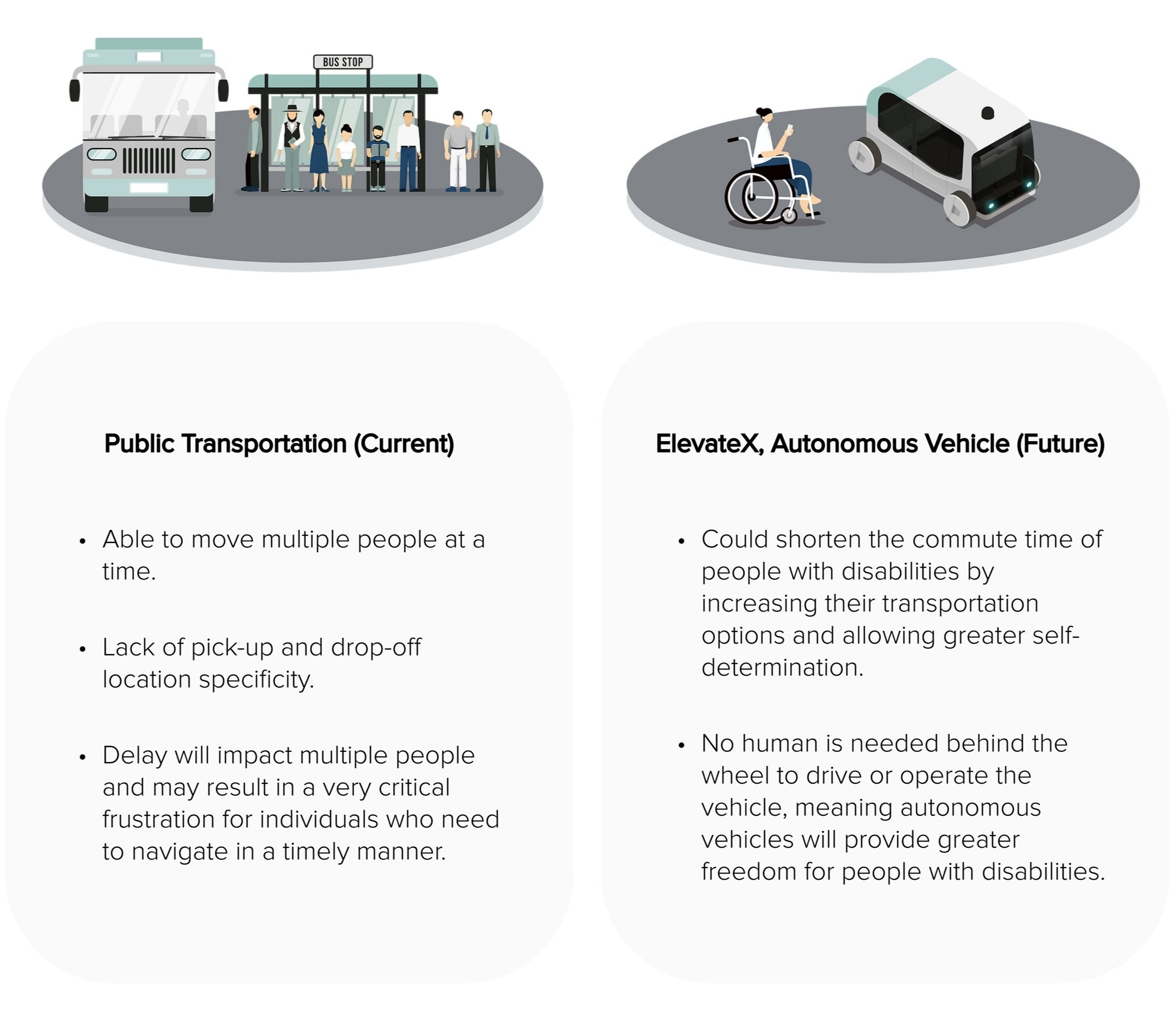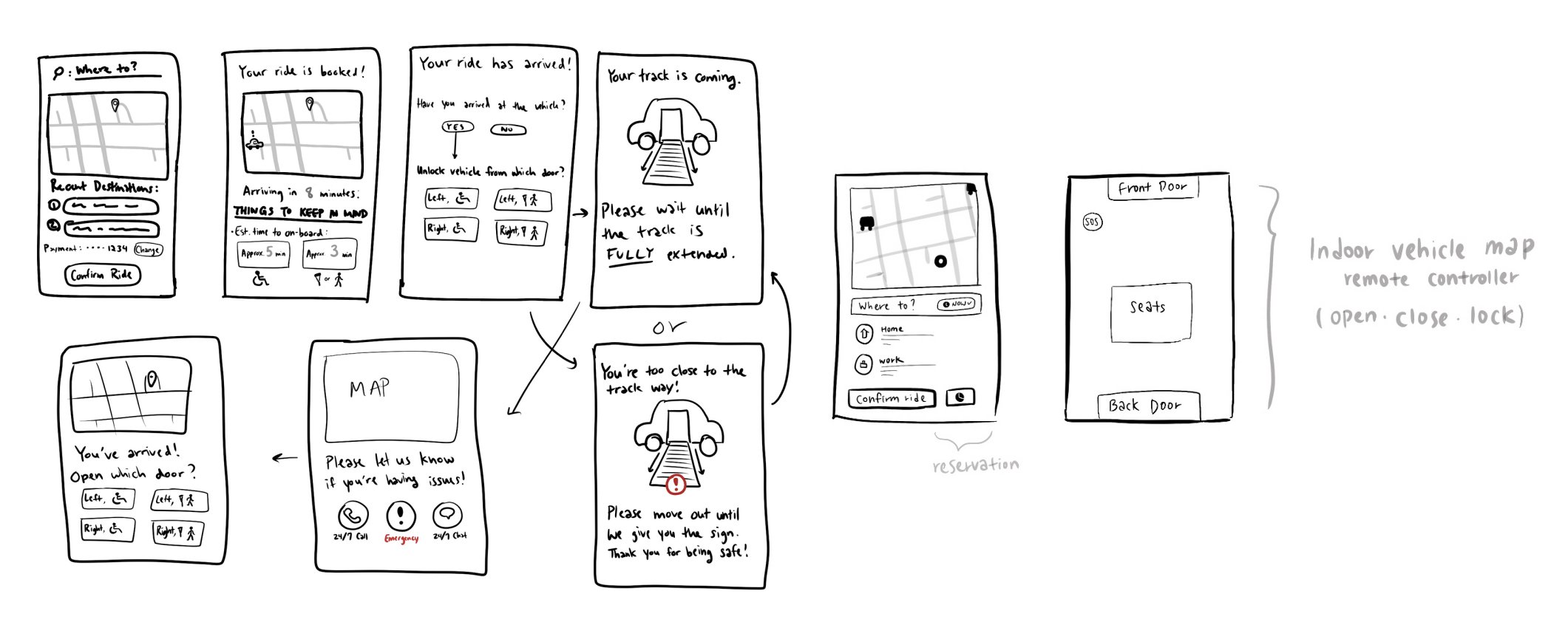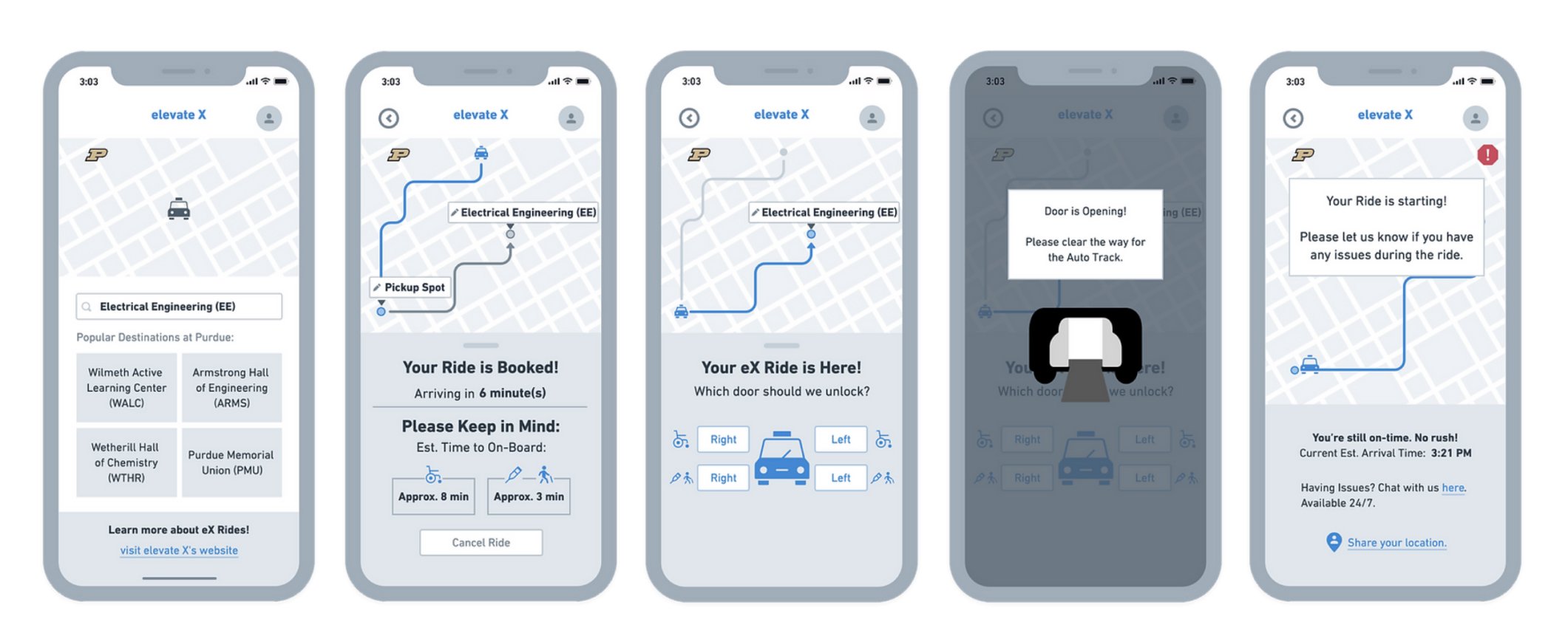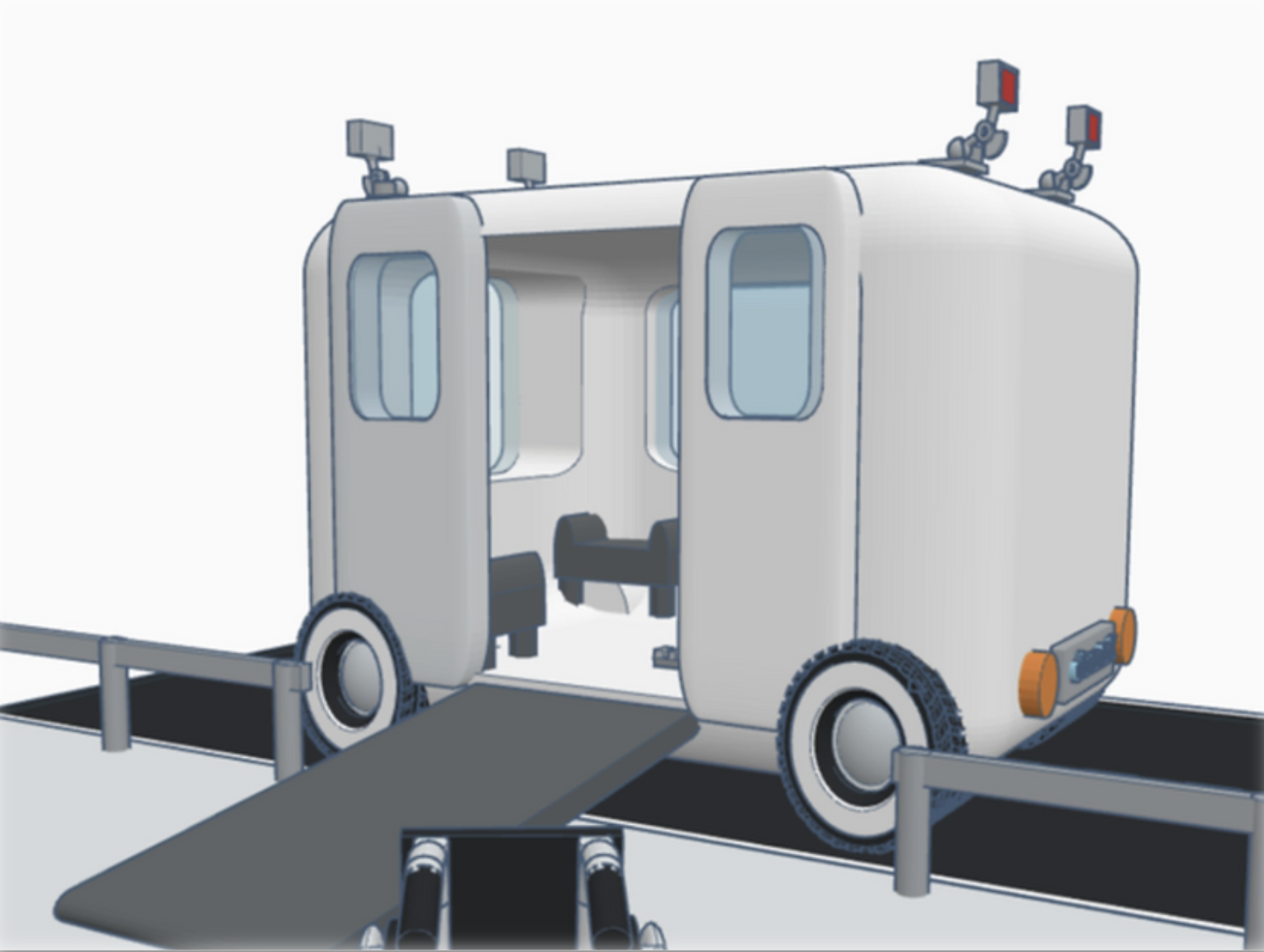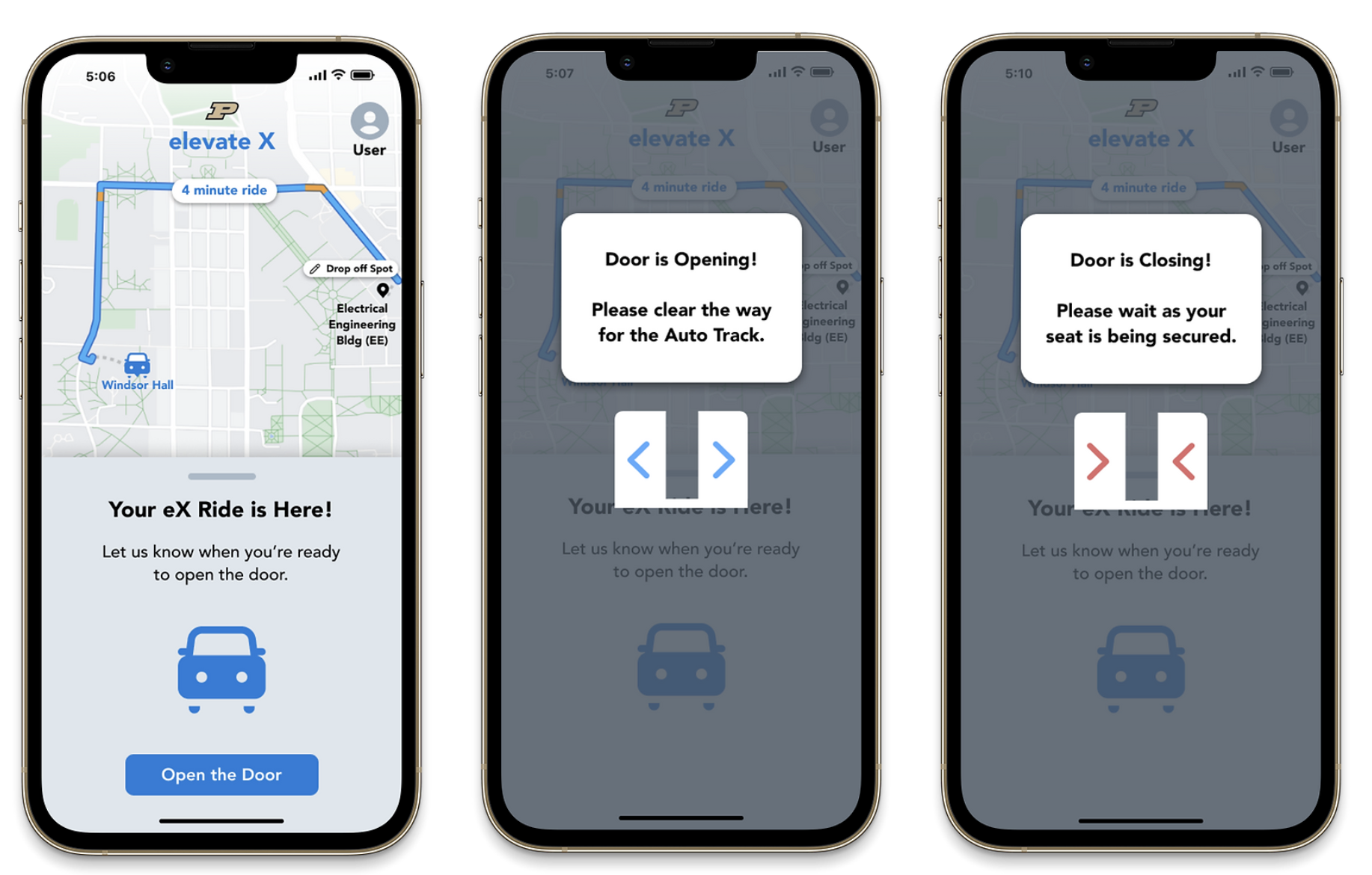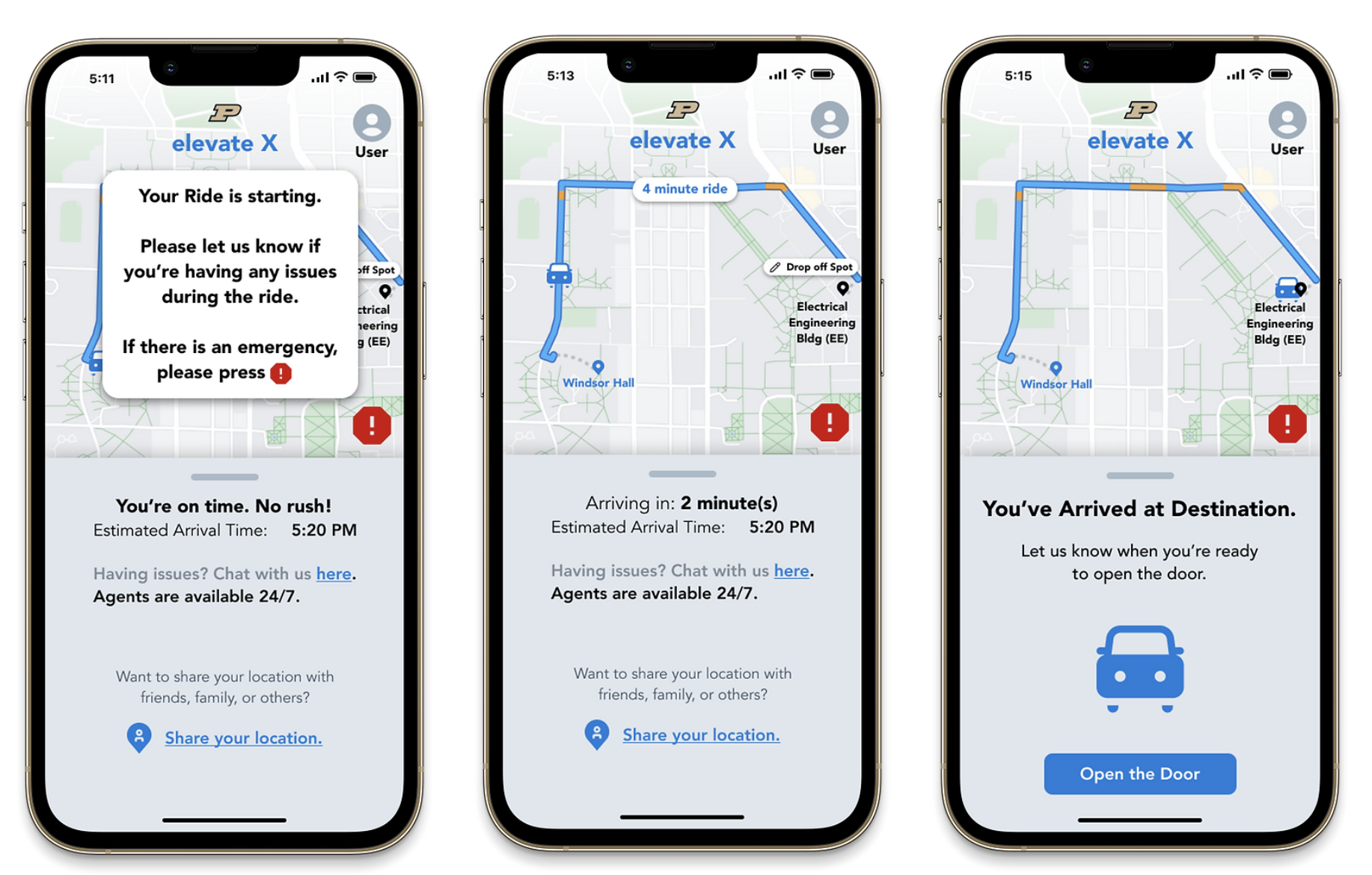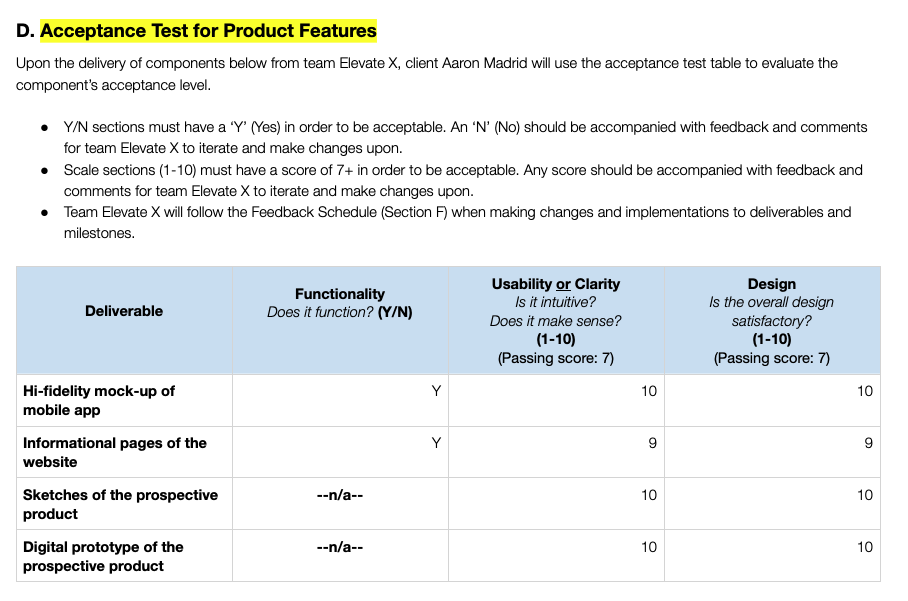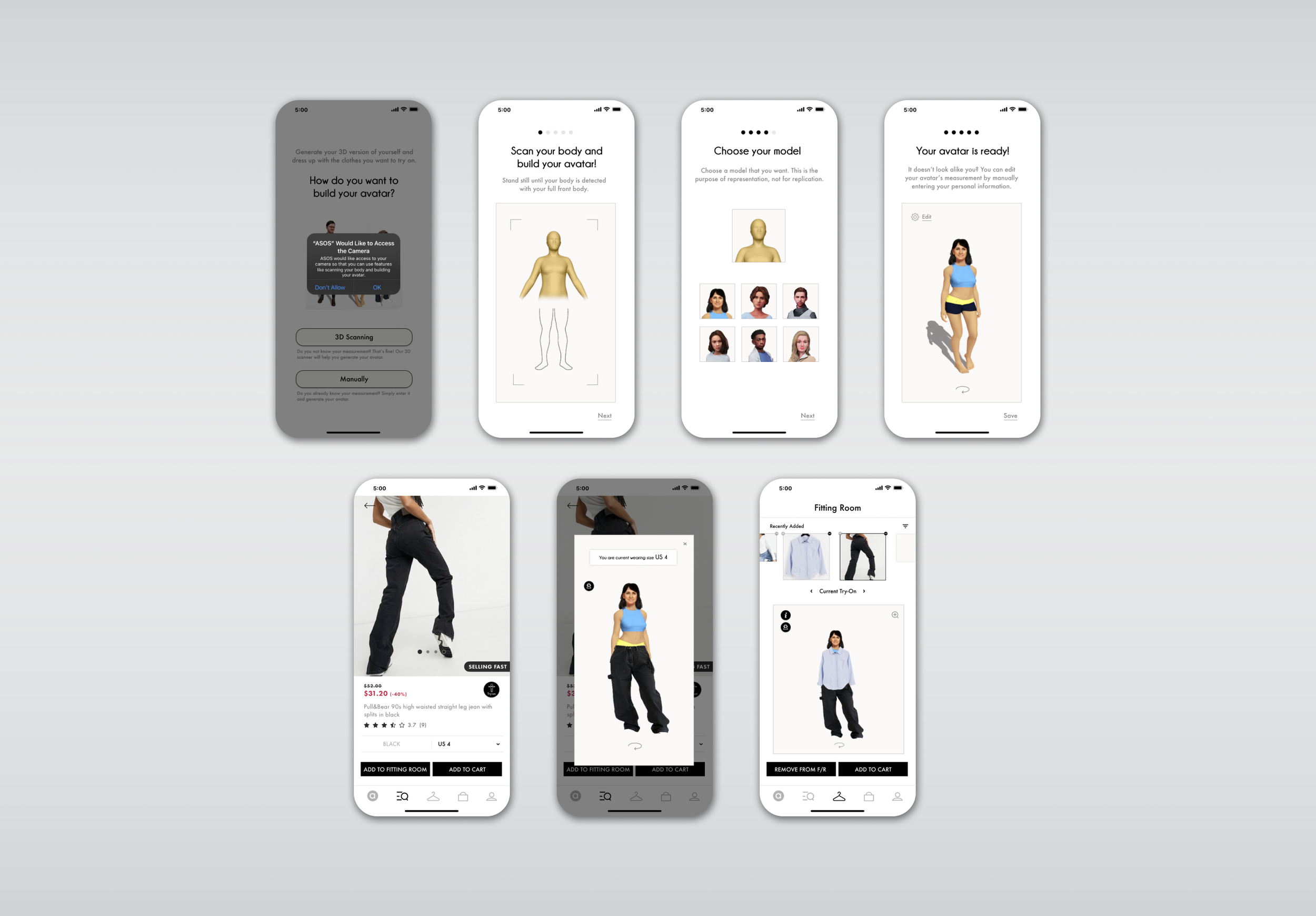Elevate X: Future Transportation Service on Campus for Disabled Individuals
Overview
This is a Senior Capstone Project from Purdue Computer Graphic Technology Department. It was worked in a cross-functional team of 2 UX Design and 3 Data Visualization seniors.
Role
Product Designer
UX Researcher
Project Manager
Date
Jan’ 22 - May’ 22 (A Semester)
With emerging technology affecting our daily lives more than ever, the methods of transportation are facing growth within the industry as well. As an inclusive university, we want to strive toward equality for all students. With a growing student body, one underrepresented group includes disabled students, who have trouble getting around campus or getting to class on time.
The Problem
Individuals on Purdue’s campus who feel discomfort in physical mobility need an intuitive, user-friendly method to navigate through the campus when needed/wanted.
Primary User Group
Final Solution
3D Vehicle Modelling
Scroll your mouse to move or zoom in / out
App Mockup
Click to play with interactive prototypes
As this project is speculative and prospective, it was necessary to add imagination in order to make sense of the project. In comparison to today, here are some common assumptions regarding the service:
How do I get there?
01.
In general, fully autonomous vehicles are more prevalent, as well as the public's overall perspective about fully autonomous vehicles is more positive and favorable.
02.
With a combination of mobile technology, autonomous vehicle, and partnering with the campus, the university assures to agree with letting Elevate X (aka the project name) serve certificated disabled communities on campus for free.
Process
In order to figure out how to address the disadvantages while utilizing the advantages of public transportation methods in our own design, I conducted secondary research, a general survey, and user interviews. It helped me to gather realistic, personal pain points and frustrations that our user group would feel on a college campus.
Why ElevateX?
Upon analyzing all the research data, I discovered several reasons why Elevate X is a better option than the current public transportation:
From Sketches to Mid-Fi Prototypes - The Vehicle
In our preliminary ideation and sketches, I asked myself the questions including:
Ideation & Iteration
01.
“How can we make this design simple, yet accessible?”
02.
“How would the experience differ for different types of mobility disabilities (e.g. wheelchair users, crutches users, etc)?”
According to the result of concept testing and in-house evaluations, the decision was made to keep the features as simple as possible, with only a ramp for accessibility, and wheel locks for safety. Furthermore, considering the emergency situation and a lack of social interaction, it was determined to design an extra room for the separate seat to accommodate additional passengers such as a friend, family member, or guardian.
From Sketches to Mid-Fi Prototypes - The App
In our preliminary ideation and sketches, I asked myself a question:
01.
“How could a mobile presence (most likely an app) enhance the riding experience of an autonomous vehicle service?”
The screenshots you see are some of the highlighted features of the app - selecting a destination, estimating onboarding time, unlocking the door, and estimating arrival time. Through an in-house evaluation of the mid-fidelity prototypes, concerns about cost arose. Because this was a service to be implemented on campus, I and the team were challenged to think about how we can make this not only accessible but affordable as well.
Emerging Technology: ElevateX (Autonomous Vehicle)
Elevate X is a completely driverless and compact transportation solution for individuals who have a physical disability/injuries that affected their mobilities. The vehicle works as a physical touchpoint of the holistic experience of using Elevate X's service. Through 3D modeling, I was able to imagine what the actual vehicle would be like and how the user could board the vehicle or secure the wheelchairs.
Final Solution
The vehicle is sized to be smaller than regular automobiles to reduce unnecessary space. As the vehicle arrives and opens the door, it will automatically roll out a ramp for the user to board the vehicle.
If the user accompanies a friend or assistant, they can sit on the bench (with a belt) right in front of the user.
After getting into the vehicle, the user can secure the wheelchair through a ratchet on the floor of the vehicle and fasten the belt.
A multi-channel service: Elevate X & mobile app
Elevate X's autonomous vehicle can be utilized through an app that completes the riding experience. The app works as a digital touchpoint of the holistic experience of using Elevate X's service. As it works similarly to other ride-hailing service apps, it can provide a point of reference and familiarity for first-time users.
Users can search for the destination and view the details of riding such as estimated onboarding time and arrival time. The University could potentially hook up Elevate X’s service with the health center at the university, and make this something provided for free for disabled students and temporarily injured students who apply through the health center or disabled student organization.
Since Elevate X is entirely driverless, users gain empowerment by controlling the entire process of entry and exit of the vehicle at their pace. Doors open automatically when prompted via the app and a ramp will roll out. Doors close behind users once they are fully secured within the vehicle. It
When the ride begins, users can see the location as well as the estimated arrival time in real-time. They also can share their location with friends and family. Moreover, an emergency button is implemented to assist in case of any medical/critical issues.
Throughout this project, I felt that I really grew as an individual working together despite the different backgrounds the team has. Although it was a challenging process, I was able to really learn more about project management and what it takes to self-manage the planning, preparing, and executing phases of a project. I also learned a lot about professional communication, in terms of keeping conversations and meetings going in between the team and the client, and that a client may decide to work with us even if it’s not for their financial or capitalistic benefit.
Result & Refelection
The measure of the successes of the project was evaluated by the client, Alternative Transportation Coordinator at Purdue Transportation Services, by using the acceptance test table to evaluate the component’s acceptance level. This project was still able to receive a lot of good feedback, support, and encouragement from our client, even though he wasn’t the one who provided us with this project.
Want To Check Out Other Projects?
Insights + UX/UI to grow products on Amazon
Career Guidance Platform Design
A Virtual Fitting Experience for Inclusive Size




